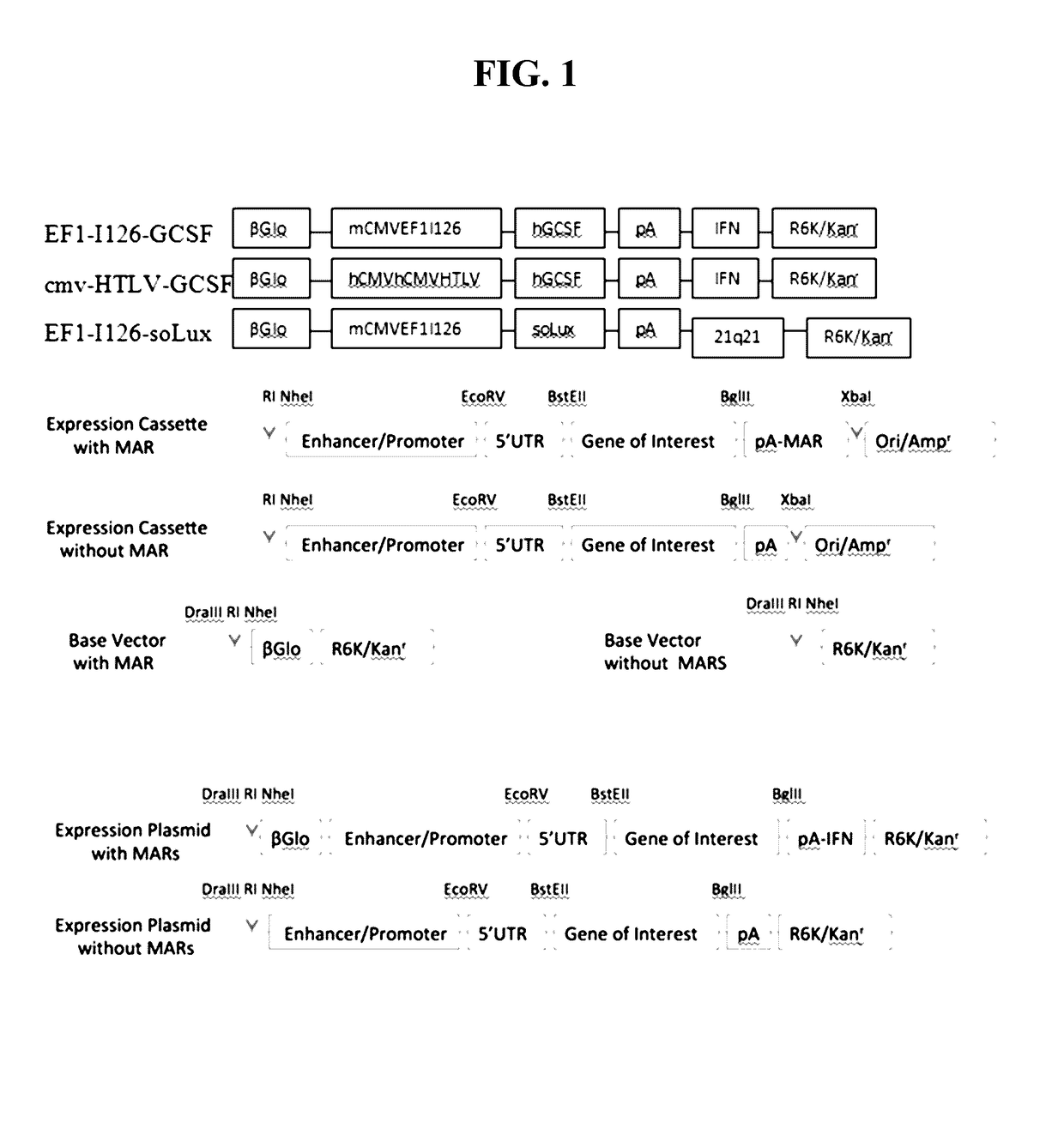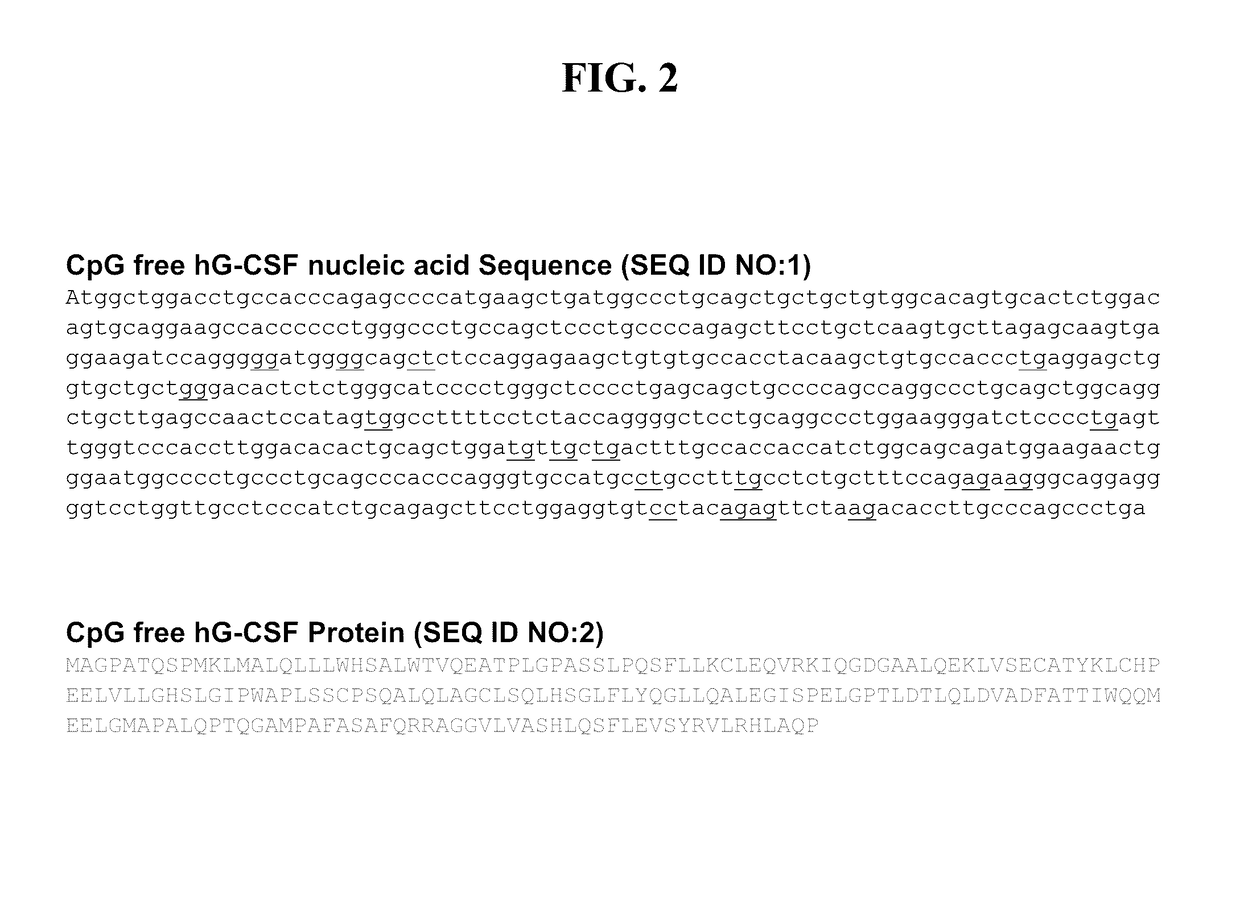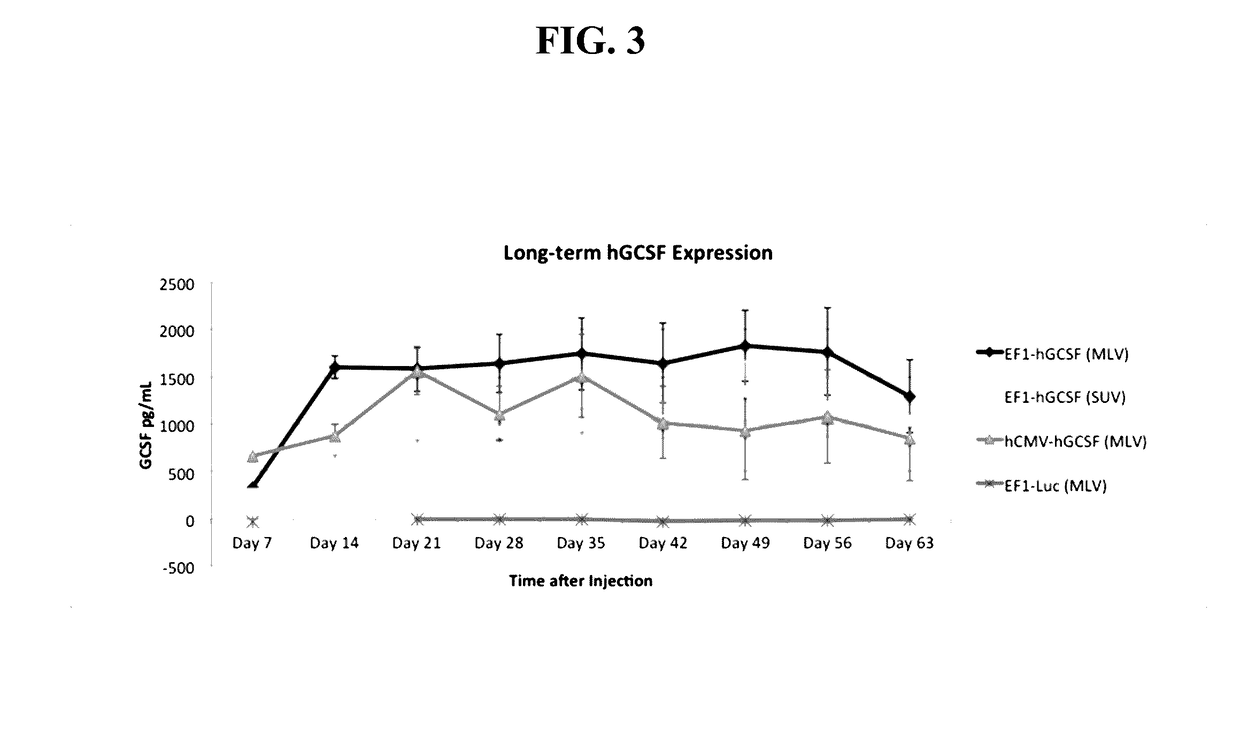Systems and Methods for Nucleic Acid Expression In Vivo
a nucleic acid and system technology, applied in the field of systems and methods for nucleic acid expression in vivo, can solve the problems of limited direct injection of plasmid dna, generalized thought of unsuitability for systemic administration of naked dna,
- Summary
- Abstract
- Description
- Claims
- Application Information
AI Technical Summary
Benefits of technology
Problems solved by technology
Method used
Image
Examples
example 1
In Vivo Protein Expression Using Sequential Injection of Cationic Liposomes Followed By CPG-Free Expression Vectors
[0107]This example describes various work using in vivo protein expression using sequential injection of cationic liposomes followed closely in time by CPG-free expression vectors.
Methods
[0108]Liposome preparation. Pure DOTAP lipid as a lyophilized powder was purchased from Avanti polar lipids. Pure DOTAP cationic liposomes were prepared by re-suspending the lyophilized powder in a solution of 5% dextrose in water at a lipid concentration of 20 millimolar. The solution was then vortexed for 15 minutes to form multi-lamellar vesicles (MLV), mean particle size 350 nm, as measured by laser light scattering. Small uni-lamellar vesicles (SUV), mean particle size 75 nm, were then formed from MLV by sonication in a bath sonicator.
[0109]Plasmid construction. General schematics for the vectors employed are provided in FIG. 1. In general, a CpG free DNA plasmid vector is typicall...
example 2
Long-Term Expression
[0145]In this Example, five mice per group were sequentially injected with 800 nmol of either DOTAP MLV or SUV followed by 90 ug of a CPG-free plasmid vector containing an EF1- or hCMV-driven hG-CSF cDNA. Serum levels of human G-CSF protein were assessed at 7- or 14-day intervals for the subsequent 428 days following injection. Obtaining and analyzing mouse serum for human G-CSF levels was performed as follows. Each mouse was anesthetized and bled via submandibular vein. Serum was isolated from whole blood using serum separator tubes from BD. Human G-CSF levels were measured in pg / ml via an ELISA performed strictly according to the manufacturer's specifications, using an R&D systems human G-CSF ELISA. The results are shown in FIG. 17, and show that supra-therapeutic levels of human G-CSF protein were produced in fully immune-competent mice for at least 428 days after receiving a single IV injection of DOTAP SUV liposomes then an EF1-huG-CSF plasmid DNA vector.
example 3
Protein Expression in Rats
[0146]In this Example, 250 gm Sprague-Dawley female rats #22 and 23 were sequentially injected with 6000 nmol of DOTAP SUV then 300 ug of a CPG-free plasmid vector containing an EF1-driven hG-CSF DNA vector. Serum levels of human G-CSF protein, WBC and absolute neutrophil counts (ANC) were assessed at 7-day intervals following injection. Serum ALT and AST levels were assessed at day 1 only. All were assessed by the UC Davis Comparative Pathology lab. As shown in FIG. 18, and Table 3 below, supra-therapeutic levels of hG-CSF protein, as well as significantly elevated WBC and ANC, were produced in EF1-huG-CSF injected rats for at least 22 days following a single IV injection. ALT and AST measured at day 1 after injection were comparable to background control levels in un-injected rats.
TABLE 3Day 1Day 8Day 15Day 22ALTDay 1WBC#226.5627.3623.6827.20Ctrl4.57#2230.30Ctrl12-67#2311.0415.7412.9020.08SEM0.27#2329.40ANC#224.9917.3112.3215.69Ctrl1.39#2289.80Crtl14-113#...
PUM
| Property | Measurement | Unit |
|---|---|---|
| Fraction | aaaaa | aaaaa |
| Fraction | aaaaa | aaaaa |
| Diameter | aaaaa | aaaaa |
Abstract
Description
Claims
Application Information
 Login to View More
Login to View More - R&D
- Intellectual Property
- Life Sciences
- Materials
- Tech Scout
- Unparalleled Data Quality
- Higher Quality Content
- 60% Fewer Hallucinations
Browse by: Latest US Patents, China's latest patents, Technical Efficacy Thesaurus, Application Domain, Technology Topic, Popular Technical Reports.
© 2025 PatSnap. All rights reserved.Legal|Privacy policy|Modern Slavery Act Transparency Statement|Sitemap|About US| Contact US: help@patsnap.com



